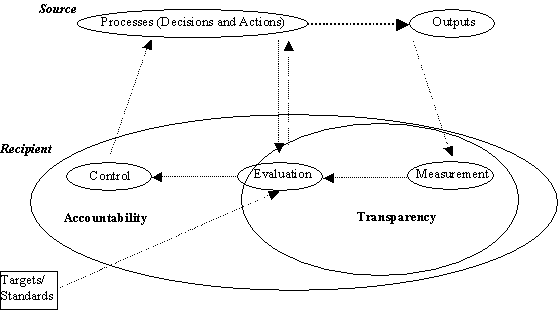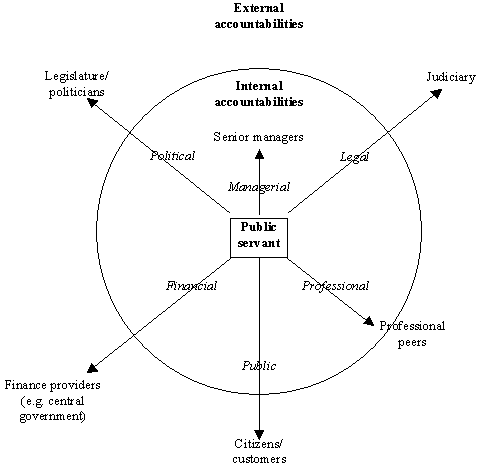In the Overview section:
Definitions
A. What are Transparency and eTransparency?
Transparency means openness of decisions and actions. Put another way, it means a free flow of information about decisions and actions, from source to recipient.
Here, we are interested in public sector transparency: flows of information about the decisions and actions taken by civil servants, politicians, judges, etc to various groups who would seek to hold them accountable. Follow this link for examples of different types of transparency.
eTransparency means the use of information and communication technologies (ICTs) to handle some or all of the transparency-related information flows.
There are various levels of e-transparency:
- Publication: just providing basic information about a particular area of government.
- Transaction: automating some public sector process and reporting on that process.
- Reporting: providing specific details of public sector decisions and actions (e.g. via performance indicators).
- Openness: allowing users to compare public servant performance against pre-set benchmarks.
- Accountability: allowing users some mechanism of control (e.g. reward or punishment) over public servants.
B. What is the Relationship Between Transparency and Accountability?
Transparency is a necessary part of accountability but - as suggested in the 'levels' just above - it is not the same as accountability. To hold a public servant accountable, you must first find out information about that public servant's decisions and actions (transparency), but you then must go further if you are actually to hold them to account for their decisions and actions. That further step - accountability - involves more than just information. It may need action by the courts, by the media, by civil society organisations, or others with the power to hold public servants accountable. Transparency, then, is a first component of accountability. The diagram below illustrates the difference.

C. Who Receives Transparency-Related Information?
There are many stakeholders to whom a public servant may be accountable, and to whom transparency-related information should flow. Some are internal to government; some are external. Each one of the arrows in the following diagram represents a flow of information that forms part of government transparency:

Public accountability to citizens combine ultimate political accountability, since public institutions are supposed to get their ultimate legitimacy from the citizenry, and client accountability, since citizens are normally the intended recipients of the services the public sector provides. An example might be a Minister being held accountable by the public for corrupt activities within their Ministry.
Other accountabilities include:
- Managerial accountability : to senior managers within the organisation. For example, public servants may be held accountable by their immediate boss for their attendance record.
- Political accountability : to those institutions that provide political legitimacy for the organisation. For example, senior public managers may be held accountable by politicians for the overall achievements of their organisation, or for particular projects that have been implemented.
- Financial accountability : to those institutions that provide the financing for the organisation. For example, project managers may be held accountable by a donor agency for the expenditure on a reform project.
Other accountabilities include the professional accountability of staff to their professional peer group (e.g. social workers to other social workers); and legal accountability to the judiciary.